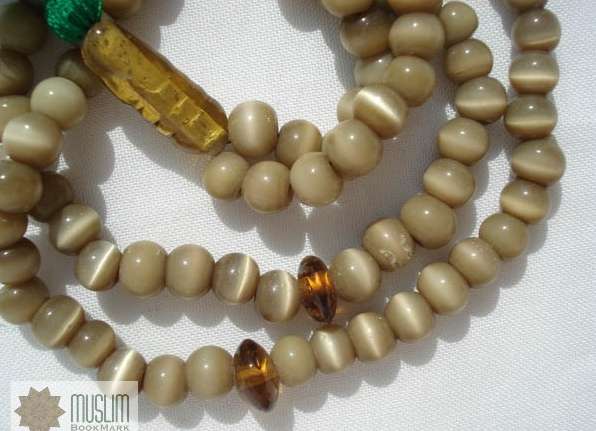FWP:
SETS == SYMMETRY
ISLAMIC: {10,2}
SMILE/LAUGHTER: {27,4}
Here's a classic verse of 'symmetry', with two readings of the striking second line, each of which works elegantly, though of course differently, with the first line. Does the ḳhandah here refer to a 'laugh', or a 'smile'? The juxtaposition with the 'clamor, tumult' in the first line may suggest quiet laughter, while the curving necklace of prayer-beads (I'm avoiding the specifically Catholic term 'rosary') can readily be compared to a smile.
In either case, the two main readings generated by the 'symmetry' of the second line work well with both:
=(2a) A small, private smile/laugh has become, to the speaker, the Ascetic's prayer-beads-- because what the Ascetic does with his prayer-beads, the speaker does with his private 'zikr'-embodying smile/laugh. That is, even when smiling/laughing in (the appearance of) joy, he is really engaged in prayer.
=(2b) The Ascetic's prayer-beads have become a small, private laugh/smile to the speaker-- because the thought of the ostentatious outward piety of the Ascetic, who makes a great show of using his prayer-beads, amuses him. Unlike the Ascetic, the speaker can and does remember the Lord even in seemingly distracting or discordant circumstances.
Another ḳhandah that is zer-e lab appears in {255x,5}.

Nazm:
The meaning of yā rab in Persian idiom is that of a cry to the Lord for help, and by the prayer-beads of the Ascetic is meant the hidden 'zikr' that is done very softly on the lips. He says that even in joy I haven't forgotten the clamor of yā rab ; my hidden smile is as if it's the prayer-beads of the Ascetic. (228)
== Nazm page 228